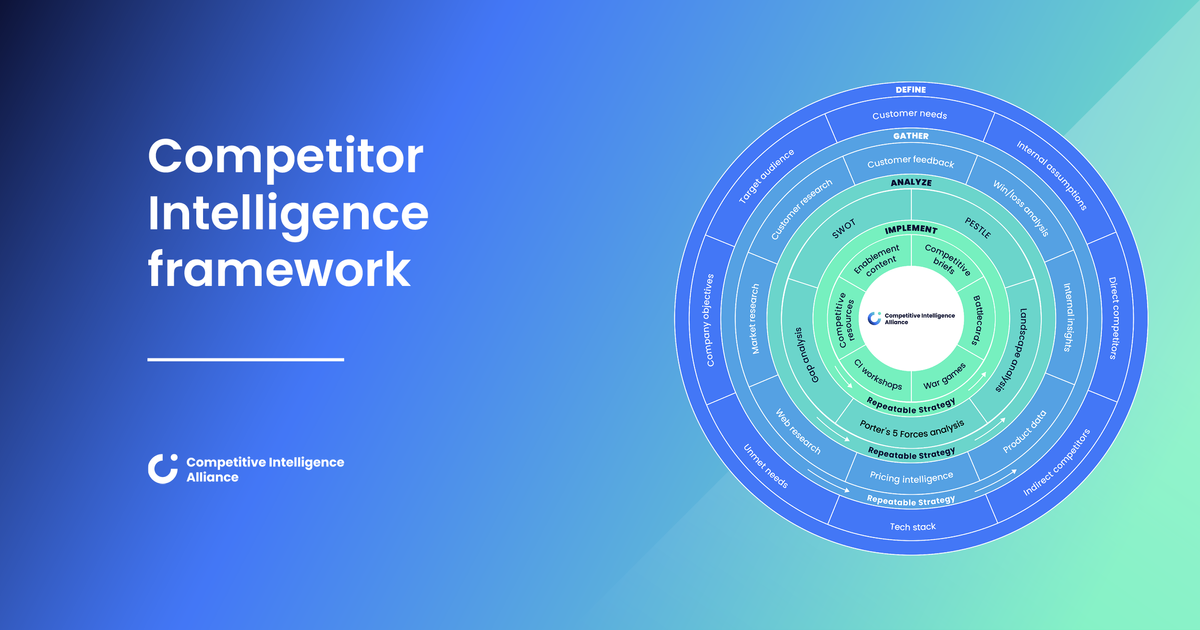There are three certainties in life: Death, taxes, and product marketers being reminded to address their customer needs.
Sure, you can be easily forgiven if you’re sick of hearing this time and time again. After all, it’s a message seemingly being played on a continuous loop, and it ain’t gonna lose its momentum anytime soon.
And with good reason. After all, a customer base is at the heart of every business, driving sales and propelling organizations to the next level.
Without them, we wouldn’t exist. Period.
So follow our advice as we look at:
What are customer needs?
There are times when we act impulsively and buy something on a whim. We’ve all been in the scenario when we’ve been at the mall with zero intention of buying something and ending up wasting money on a horrific shirt that’s confined to the wardrobe, never to see the light of day.
However, the majority of the time, customers buy products or services because there’s a genuine need and reasoning behind their purchase.
Let’s say the customer’s lawn is looking like Tarzan’s Africa, and they’re keen to transform it into their very own Garden of Eden. They’ll need a lawn mower and gardening equipment to resolve their problem.
So, customer needs can be defined by what a customer wants and needs when they’re set to interact with your business, your competitors, or when they’re searching for a product or service you may be able to offer them.
Product marketers need to make sure they’re in a position whereby they can cater to the requirements of customers who fit their buyer personas. Let's face it, if you can’t offer the solution to their problem, they won’t hang around until you’ve got your ship in order. They’ll waltz to your nearest competitor, who’ll be more than happy to benefit at your expense.
Which prompts the million-dollar question: Which methods are used to identify customer needs in the first place?
How to identify customer needs
Make no mistake, understanding your customer needs isn’t merely a case of throwing mud and seeing what sticks. A range of methods are used by companies to ensure they’re not barking up the wrong tree and offering customers products that are way wide of the mark.
But this doesn’t mean it isn’t possible to introduce ways that’ll give you an indication of what customer needs you should be honing in on - and as usual, we’re going to ease your worries and give you a whistle-stop tour of what you need to know.
Hakuna Matata.
Focus groups
Sometimes, you need to turn to the art of conversation to discover what you want to find out, in which case, what better way to pick the brains of your customers than focus groups?
Focus groups are a market research method whereby you interview a group of people who are representative of your target audience.
Granted, a breadth of valuable information can be gained by using data, but addressing your prospective customers directly brings a whole new perspective on what they want in terms of features, price points, and so forth. You can even grill them on things they don’t like about products provided by competitors and use this feedback to either develop an existing product or design an offering that’ll blow their socks off - figuratively speaking, of course.
Focus groups provide the perfect backdrop for a frank, honest discussion with your customers. While you may not necessarily like some of the feedback you receive, in many ways, that’s the point of conducting these sessions - to iron out any imperfections and be sure you’re providing a solution your customers love.
Sometimes, it may be difficult to get a sample together to survey a physical location, particularly given the current circumstances surrounding COVID-19. Yet this needn’t stop you in your tracks. Surveys can be sent via email, post, and with the emergence of video platforms such as Zoom, you could even hold a virtual meet - the possibilities are endless.
Working on a budget? No worries - Google Forms is an awesome tool you can use for free.
So, wear your thick skin and set the ball rolling.
Social listening
Social media listening allows companies to track and analyze what their prospective customers are saying about them on social media channels, such as Facebook, Twitter, and Instagram.
In 2019, 2.95bn people were using social media platforms - pretty crazy, right? In essence, this creates an invaluable pool of feedback for companies whereby they can monitor their customers' social media posts and see exactly what’s being said about their company and the services they offer.
Let’s say you’re a fast-food chain and your brand-new burger prompts a hashtag to start trending on Twitter - and the feedback isn’t great.
The widespread feedback amongst burger buffs is the sauce on the burger is too spicy, but otherwise, they love the other features of your new creation. You could go back to the drawing board, revise the recipe, and start the same burger, with a sauce that won’t give diners the sweats.
This is a perfect example of social listening: you’ve launched a product, listened to the response, and amended your offering to align with the expectations of your customers.
Easy-peasy.
Keyword research
Not only is it important to think about what your customers want, but it’s also important to think about what they’re searching for.
Google receives over 63,000 searches per second on any given day. Madness, isn’t it? And all the more reason you need to make sure your keywords are on point.
Keyword research not only sweetens your SEO ranking, but it can also give you an idea of your customer’s requirements, and what they want from your business and the product or service you’re offering. By identifying your customer’s online searching habits and more to the point, how they’re searching for your company and industry, this enables you to establish exactly what they’re looking for - i.e. their customer needs.
Using this nugget of information, you can finetune your strategy to ensure you’re giving your customers what they need.
Customer needs analysis survey
The customer needs analysis is used to help companies figure out their position in their respective competitive markets and how they fair in terms of meeting their target customers' needs.
The survey should ask questions about your brand as well as competitors, what your customers know about your product, and brand awareness in general.
You could ask:
- Are there any positive and negative word associations with our brand?
- Which brand would you is similar and/or competes with our brand?
Means-end analysis
Now you've conducted the customer needs analysis survey, you can use the answers to get a better picture of why your customers are your customers, as well as what makes your product or service stand apart from your competitors'.
A means-end analysis uses those answers to determine the reasons why a customer would buy your product.
These reasons are then divided into three main groups:
1. Features: Your customer may purchase your product because of a specific feature, if you were buying a new phone, for example, the fact that it has a titanium, indestructible casing might be a draw.
2. Benefits: Your customer buys your product or service because of a benefit, they believe your product will offer them. E.g. the customer might buy your phone because it wirelessly syncs to their other devices easier than competing models.
3. Values: A customer buys a product or service to help them fulfill an individual value. They may feel that by buying this phone they’ll communicate more frequently with loved ones who have the same handset.
Reasons for buying a product can be personal to each customer and vary wildly, which is why it’s important to make note of the answers and group them into each category. From there you can identify exactly which motivating factor your product falls under and which perceived problem it solves!
This is a great way to find areas you need to improve in and discover new ways to one-up your competitors.
Looking for next steps?
Competitive intelligence is a powerful growth lever for any organization... if done right.
There are many concepts to master if you're to satisfy your customers, motivate your team, and optimize your workflows.
Enter our Competitive Intelligence Framework. 🏁
It covers everything you need to know to navigate the competitive intelligence cycle, from start to finish.

Examples of customer needs
There is a whole range of different customer needs. For example, when we reach into our pocket and order an Uber taxi, this is driven by the need to go from A to B. Similarly, we may call for a pizza delivery, and again, this is driven by our need to satisfy hunger.
The list is endless. We’ve categorized the types of customer needs below and divided them into two categories: product needs and service needs - have a nosey and familiarize yourself with them.
Product needs
Functionality
Q: Given the choice, will your customer A) invest in a product or service that does half a job, and may not even solve their problem, or B) buy a product or service that’ll tick all the boxes?
No prizes for the right answer there. Customers need your product or service to function exactly the way they need it to, to rectify an issue or fulfill their desire.
Price
Whether it’s $20 or $2000, more often than not, buyers will be working on the constraints of a budget.
Remember, your customer will have a price point they won’t be able to surpass, so price accordingly.
Compatibility
Always ensure your product or service is compatible with your existing products on offer.
For example, when Xbox released its Xbox One console, a list of backward compatible titles from the previous console was released, meaning gamers could continue to enjoy their old favorites.
In doing so, you’ll keep your customers happy, and reduce the likelihood of them switching allegiances to your competitor.
Efficiency
Let’s face facts: we’re all impatient, and your customers are no different when looking for a product or service. They’ll always be attracted to a product or service that offers immediate gratification.
Performance
Nobody would visit a car showroom and buy a top of the range Mercedes with square wheels. After all, why buy the undrivable car?
Similarly, your product or service needs to fulfill the duties required by the customer so they can achieve their goals.
Reliability
Sticking with the car motif, ever wondered why so many people buy Volkswagen cars? One word: reliability.
Products or services need to perform reliably, as advertised, whenever the customer uses it. Anything else doesn’t meet the customer's needs.
And that won’t cut the mustard.
Design
A product could have every feature on God’s green earth, but if it’s lacking aesthetically, chances are it won’t perform to its optimum potential.
When designing your product, always put usability at the forefront of your mind, because if it’s awkward to use, there's a strong possibility this will impact the customer experience and they could seek future solutions elsewhere, rather than give you a chance to redeem yourself.
Experience
Never overcomplicate things as far as using your product or service is concerned.
Remember, the customer has bought your product to simplify matters, not make things harder!
Convenience
Your customers are always looking for the most convenient solution to their problem - if they wanted to jump through hoops, they’d have joined the circus.
Offer a practical solution to their problem. They’ll be grateful for it.
Service needs

Accessibility
Nobody wants to constantly hear a pre-recorded message when calling customer service teams - it’s irritating, and sends out all the wrong signals.
You need to make your customer service support teams accessible, even if this means having multiple ways whereby they can get in touch with you, including chatbots, customer service numbers, and so forth.
Remember, word of mouth can make or break your company’s reputation, and if your existing customers turn the air blue if you’re not accessible, they’ll make their voices heard.
Empathy
However, let’s be positive and assume your customers won’t have any trouble at all contacting you.
Top tip: people getting in touch with customer support aren’t calling for a chat - they have a problem. So, if they’re disappointed, or express dismay for whatever reason, show empathy and understanding when providing help.
Be fair
Nobody likes being ripped off. Ever.
So, when you’re pricing your product or setting out terms of a customer contract, don’t be sneaky or sly. It’s not big, it’s not clever, and you’ll only wind up booking your customers a first-class, all expenses paid trip to your nearest rival.
Be clear
Similarly, we can’t say how important it is to be crystal clear with your customers.
For example, if their cell phone tariff is set to increase by a couple of dollars, don’t spring a surprise on them when they open their next bill. Pick up the phone and let them know. They’ll appreciate your honesty, and it’ll only do good for your reputation.
Control
Everyone likes to feel some level of control and customers are no different when it comes to business interactions. Customers should feel empowered from start to finish and well after the sales. Make it easy for them to return products they don’t find satisfactory, play around with terms, and change subscriptions and you’ll have a customer for life.
Options
Consumers need options, after all, variety is the spice of life! Make sure you offer a variety in the form of products, features, subscriptions, and the way your customers can pay.
Information
Ever been in a scenario whereby you’re totally out of the loop?
If you haven’t, you’re not missing out: it sucks. If you have, you’ll know what we’re talking about, and shouldn’t subject your customers to the same treatment.
When people know about what they’re buying, this inspires trust; a relationship with no trust holds no credence, and sooner or later, you’ll shoot yourself in the foot.
Publish content geared to providing your customers useful information they can use to make informed buying decisions and get the most from their purchases: blogs, instructional videos, downloadable brochures - they’re all useful resources that’ll improve your overall service.
What are the most common customer needs?
We’ve unleashed a helluva lot of examples onto your plate in our previous section, but don’t panic; not every single one of the aforementioned customer needs will be particularly applicable to your circumstances.
To round off, here’s a bite-size list of the most common customer needs:
- Price
- Reliability and sustainability
- Risk reduction
- Usability and convenience
- Transparency
- Control
- Empathy
- Information
How to meet your customers’ needs
Sometimes, circumstances stop your customer from meeting their needs with your products or services, and when you’ve devoted copious amounts of time and effort to developing a product or service you’re super-proud of, it can be difficult to stomach seeing customers go elsewhere.
But not to worry, some steps can be taken to address common pain points and have your customers eating out the palm of your hand.
Well, not literally, but you know what we mean. Here are some ideas:
- Develop company-wide messaging,
- Provide in-depth instructions for easy adoption,
- Always ask for customer feedback,
- Nurture customer relationships, and
- Create the right buyer personas, to solve problems the right way.
Want to learn more?
Product marketing is and always will be a customer-centric role. A core part of your job is to value the voice of the customer and advocate for their wants, needs, and pain points. It’s your responsibility to make them feel heard. Therefore, customer marketing is an integral part of what you need to do to ensure that you’re staying true to this.
The Customer Marketing Certified: Masters course has been designed to give you invaluable, practical insights into streamlining your customer marketing approach so that you can ensure that:
- Your customers are happy,
- Your products are the best they truly can be,
- Your brand reputation is consistently positive, and
- That you bring in increased revenue for your organization.
So what are you waiting for?





.png?v=b84d65a2be)